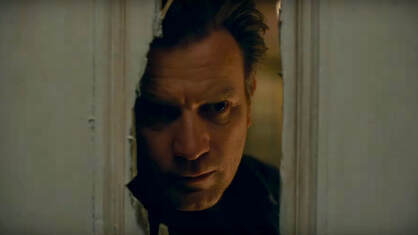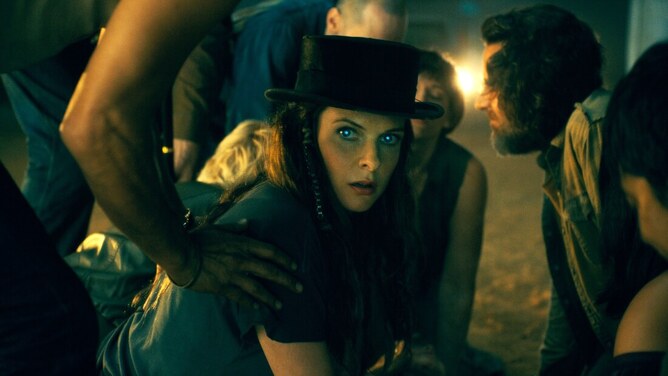 Stephen King exists in a world apart. His writings, numerous and infinite in their influence beg to be adapted to visual medium. Yet time and again they have been with varying degrees of success, more oft than not falling to the lesser end of the scale, and it’s hard to pinpoint exactly why. Is it the amount of character work that King painstakingly layers into his stories, characters that require room and therefore time to breathe? Is it that so often the elements of terror lay more within than without, making them vaporous and difficult to convey?... ...It’s hard to say, but one thing that is sure is that director Mike Flanagan has had some of the greater successes with adapting King’s writing and Doctor Sleep, the adaption of King’s 2013 sequel to The Shining, is no exception. Doctor Sleep spans nearly 40 years, following Danny Torrence (Ewan McGregor), in the wake of the events that nearly claimed he and his mother’s lives at the Overlook Hotel. Danny, with the help of former Overlook chef Dick Hallorann (Carl Lumbly), learns to cope in the aftermath and manage his paranormal gift or shine. The trauma, however, takes its toll as Danny dives headlong into alcoholism, following in his father’s footsteps. Driven by the shame of a particularly degrading episode, Danny hits rock-bottom and finds his way to Frazier, New Hampshire where Billy Freeman (Cliff Curtis) a local with his own small shine helps Danny recover. Elsewhere in the world, The True Knot, a group of nearly-immortal psychic vampires led by Rose the Hat (Rebecca Ferguson), stalk the roads of America in a roving band of RVs, feeding on the ‘steam’ from murdered children that possess the shining. Having fallen on days of lean steam the True Knot launches into full mobilization after discovering the existence of Abra Stone (Kyliegh Curran), a teenage girl with immense shining capabilities who has forged a psychic connection to Danny. Flanagan performs a daring high-wire act, crafting what is at once both a deserved sequel and a faithful adaptation of the source material. It’s clear that pains have been taken to map the territory from which Doctor Sleep has to grow. Even with a nearly three-hour runtime, the pacing feels frenetic, which unfortunately kneecaps elements of dread and certain character developments. Those acquainted with King’s novel will notice the film a bit light on Danny’s redemptive arc and struggle with addiction. But in keeping things fair, the source material is notably both lean and dense, there’s a great deal that happens over 531 pages and each passage is dispatched concisely. Still, certain omissions arise that seem almost senseless and unmotivated by the constraints of time. It’s also this quandary of time that brings up a nagging question at the back of the mind when considering adaptations of King’s writing. Would source material like Doctor Sleep be better served by the allowance of breathing room in the form of a limited series? The issues of pace are most notable in Danny’s return to the Overlook Hotel, it feels rushed. His re-entry is swift and devoid of dread, relying heavily on foreknowledge, no need to renew. It’s a bit of dark tourism, a classic film set walkthrough curated by a greasy charlatan, palming the cash of breathless devotees and fanboys as they’re whisked to the finish. It comes as a surprise, given that Flanagan found a way to turn one of King’s most stationary and internal novels, Gerald’s Game, into a searing excavation of a woman’s psyche under harrowing circumstances. Truly a feat of pacing. Even in the face of the inherent complications of adapting a Stephen King novel, it would be wildly disingenuous to not acknowledge Flanagan for his deft navigation of the material he’s chosen to include. Moments of high, piercing terror ring true and chilling and his depiction of The True Knot’s ‘cycling’ is a gruesome spectacle that’s likely to haunt viewers well beyond the theater parking lot. A muted, cool green tone hangs over the whole picture and imbues it with a sickness that slivers right into the undercurrent of the story, addiction, predation, and even literal illness. Michael Fimognari’s cinematography in the latter half, particularly in the scenes leading up to and during the return to the Overlook, is nothing short of magnificent. The recreation of the aerial mountain shots sweeping over the lake and the hotel are enough to water even the hardest eyes. The visual atmosphere of gloom and decay is thick enough to cut and The Newton Brothers’ re-working of Wendy Carlos and Rachel Elkind’s iconic score is a cinematic terror time warp. Some of Flanagan’s more clever re-working also comes later in the film, solidly into spoiler territory, but suffice it to say that it becomes increasingly clear as to why King gave his blessing to a film made as a sequel to the adaptation he has an infamous distaste for. While some of the door frames might be off-center, and some of the crown molding uneven, Doctor Sleep proves itself among the best-constructed of the haunted rooms in the ever-growing house of Stephen King’s cinematic universe. Doctor Sleep is now shining in theaters through Warner Brothers. By Paul Bauer
0 Comments
Leave a Reply. |
Archives
March 2023
|


 RSS Feed
RSS Feed